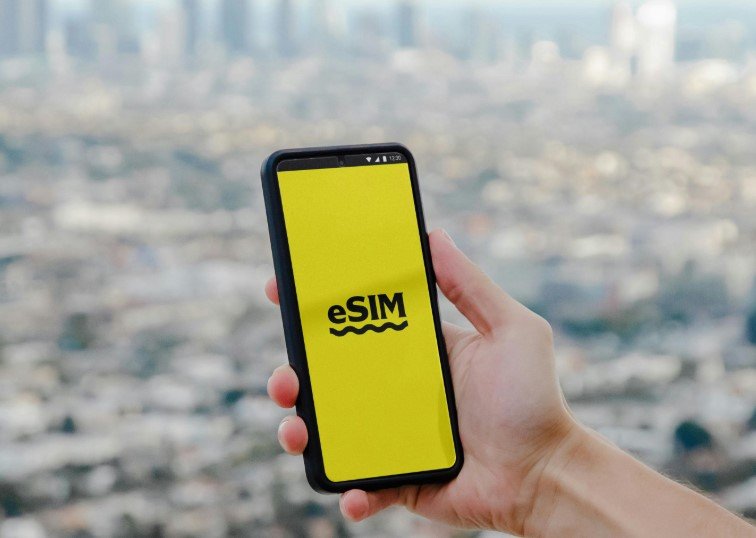Apple is gearing up for a big change with its upcoming iPhone 17 lineup. Recent reports show that store employees in the European Union are now training on eSIM technology, sparking rumors that the new phones will ditch the physical SIM card slot starting this fall.
This shift could make the iPhone 17 fully reliant on digital eSIMs in more regions, following a trend that began in the United States three years ago. The move aims to streamline device design and push mobile carriers toward modern standards.
Why Apple is Pushing eSIM Now
Apple first removed the physical SIM slot from iPhones sold in the US with the iPhone 14 series back in 2022. That decision forced carriers to improve eSIM support, making it easier for users to switch plans without swapping cards.
Now, sources indicate similar changes are coming to Europe. Employees at Apple stores and authorized resellers must finish eSIM training by early September 2025. This timing lines up with the expected iPhone launch event just days later.
The push reflects Apple’s goal to create slimmer, more efficient devices. Without a SIM tray, phones can have better water resistance and more space for batteries or other features.
Experts say this could speed up global adoption of eSIM, which offers benefits like instant activation and support for multiple lines on one device.

Training Details and What It Means for Users
The training happens through Apple’s SEED app, a tool used worldwide by store staff. It covers how to activate eSIMs, transfer data from old phones, and help customers set up their devices without physical cards.
This preparation suggests Apple expects a surge in eSIM-related questions after the iPhone 17 release. For users, it means no more tiny SIM cards to lose or damage.
However, not everyone is ready. Some travelers rely on physical SIMs for cheap local plans abroad. Apple may need to work with carriers to make eSIMs more accessible in those cases.
In regions like China, where regulations favor physical SIMs, the slot might stay. But for most users, this could simplify phone setups.
Here are key steps users might follow for eSIM setup on the new iPhone:
- Scan a QR code from your carrier during initial setup.
- Use the phone’s settings to add or transfer an eSIM profile.
- Contact your provider if you need to switch from a physical SIM.
Rumors Around iPhone 17 Models
Talk of the iPhone 17 going eSIM-only has focused on the slim iPhone 17 Air model. Its thin design leaves little room for a SIM tray, making eSIM a natural fit.
But leaks suggest this change might apply to the whole lineup, including Pro models. Analysts predict Apple will expand eSIM-only phones to more countries beyond the EU.
This fits with Apple’s history of bold moves, like removing headphone jacks in 2016. Each time, it drives industry changes.
Recent events, such as improved eSIM support in Android phones, show the tech world is catching up. Apple’s step could make eSIM the new standard by 2026.
| Model | Expected SIM Support | Key Feature |
|---|---|---|
| iPhone 17 | eSIM-only in EU, possibly global | Slim design, advanced camera |
| iPhone 17 Pro | eSIM-only in select regions | Pro-level processor, enhanced display |
| iPhone 17 Air | Fully eSIM, no physical slot | Ultra-thin body, long battery life |
Challenges and Benefits of Going eSIM-Only
Switching to eSIM brings clear upsides. Users get faster setups and the ability to manage multiple numbers easily, ideal for work and personal lines.
On the flip side, older devices or areas with poor carrier support might face issues. Some countries still lag in eSIM infrastructure, which could slow adoption.
Apple has addressed this by partnering with major carriers worldwide. For example, recent updates in iOS have made eSIM transfers smoother between phones.
Looking ahead, this could cut down on electronic waste from discarded SIM cards. It also aligns with trends like 5G and beyond, where digital solutions rule.
Global Impact on Carriers and Consumers
Carriers in Europe and beyond will need to ramp up eSIM services quickly. Past rollouts in the US showed initial hiccups, but now most providers offer seamless support.
Consumers might see lower costs over time, as eSIMs reduce the need for physical production and shipping. Travel could become easier with instant plan switches via apps.
Industry watchers predict that by 2027, over half of smartphones worldwide will be eSIM-only. Apple’s influence plays a big role in that shift.
If you’re thinking about upgrading, check your carrier’s eSIM options now to avoid surprises.
What do you think about Apple dropping the physical SIM slot? Share your thoughts in the comments and spread the word to fellow tech fans.
